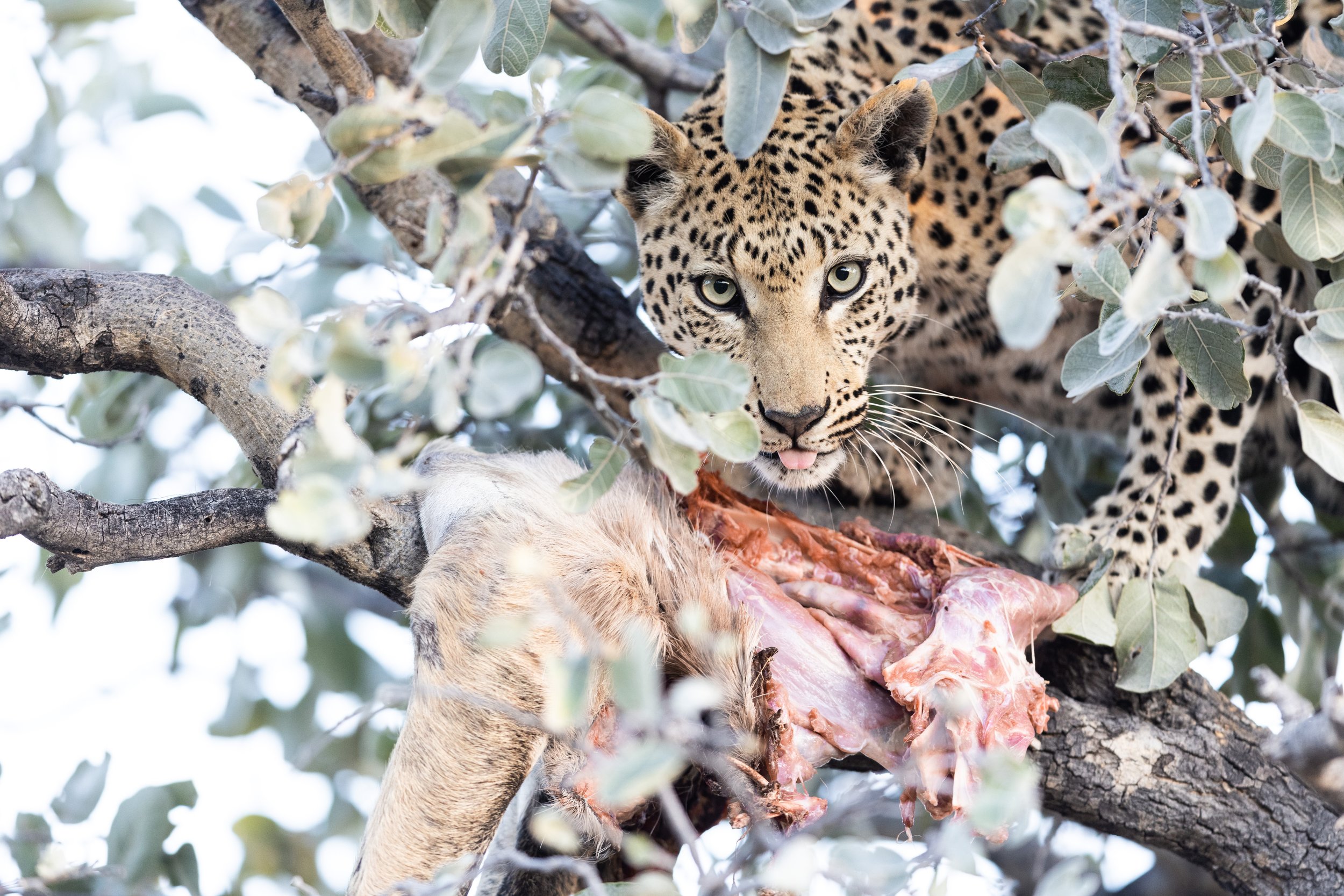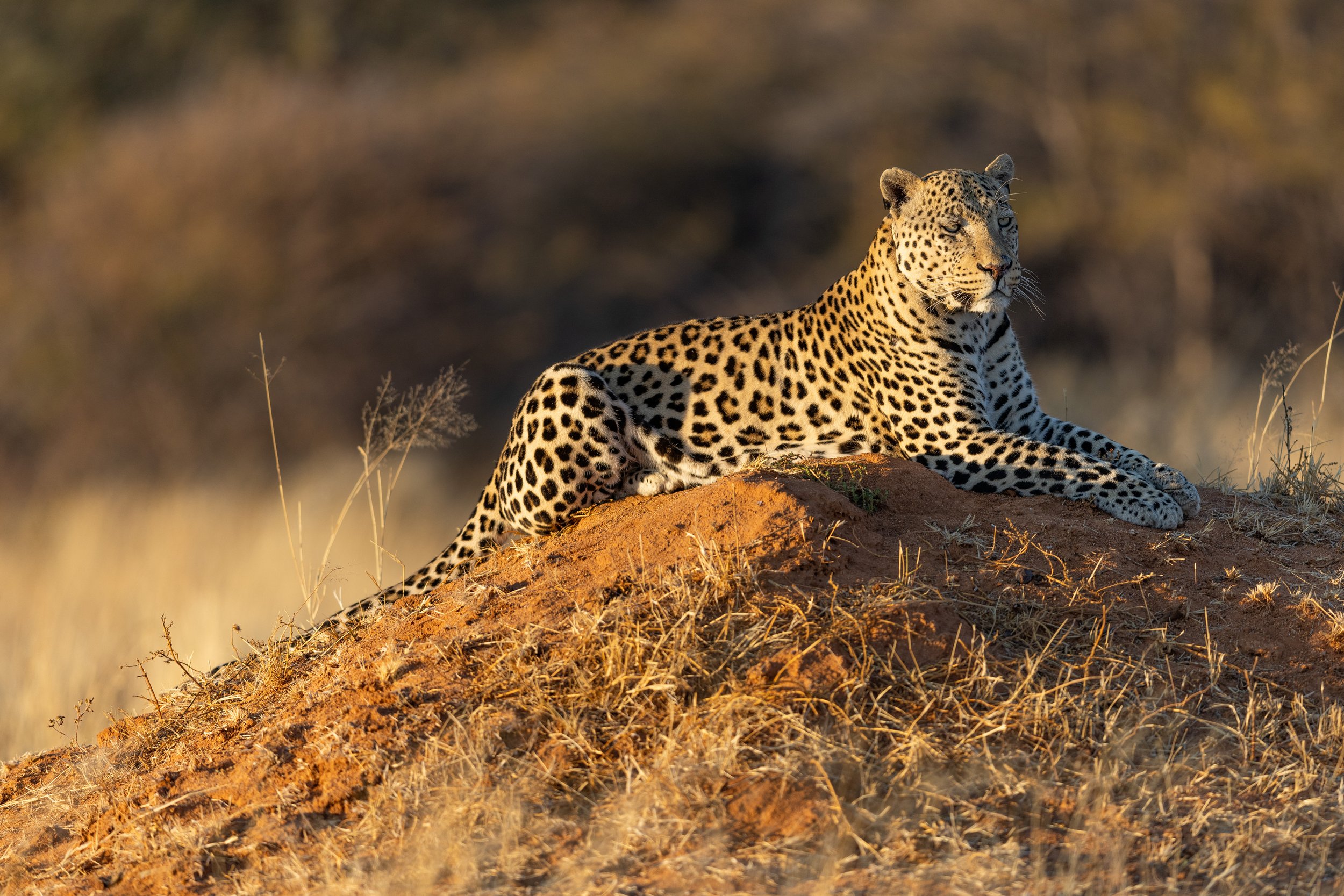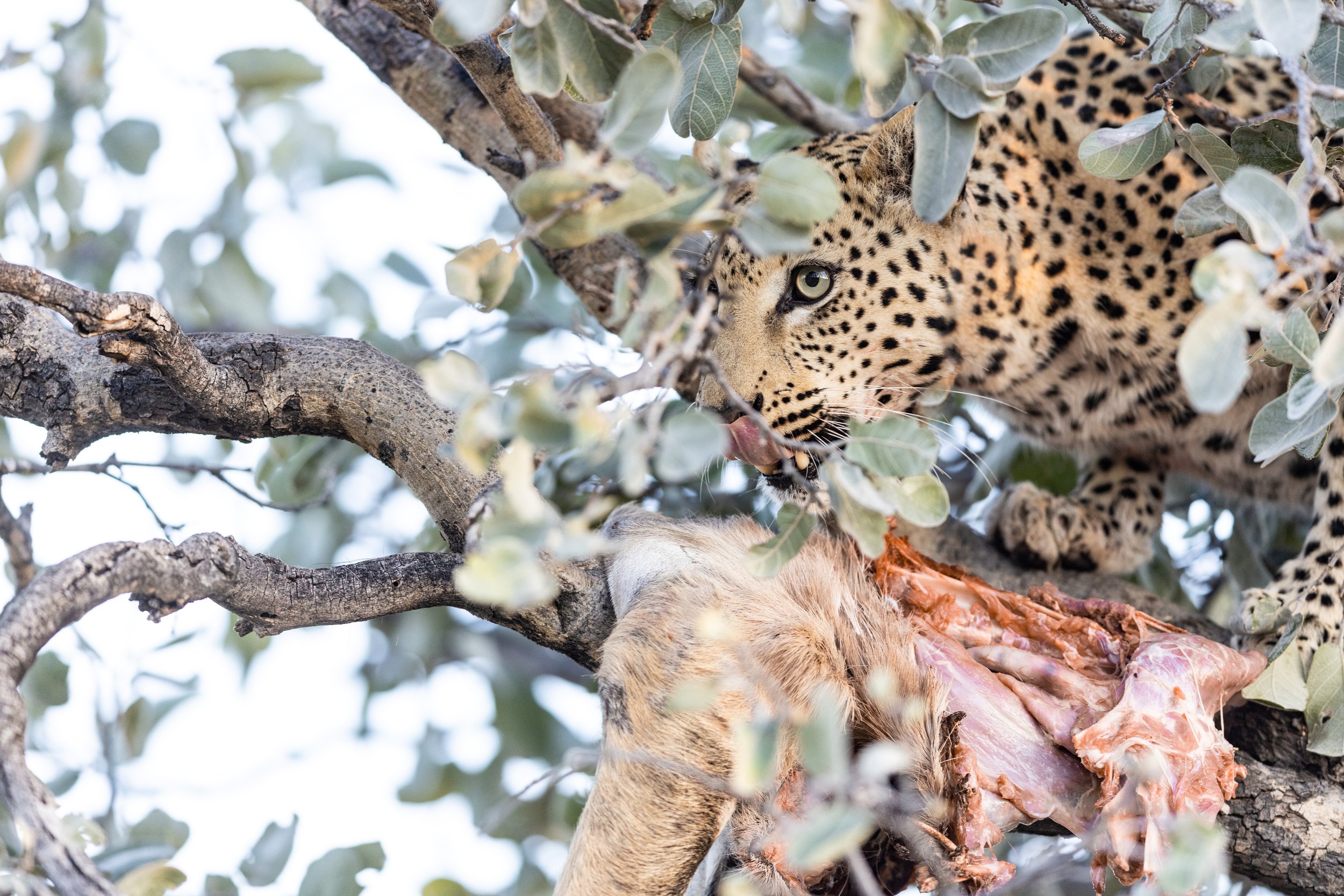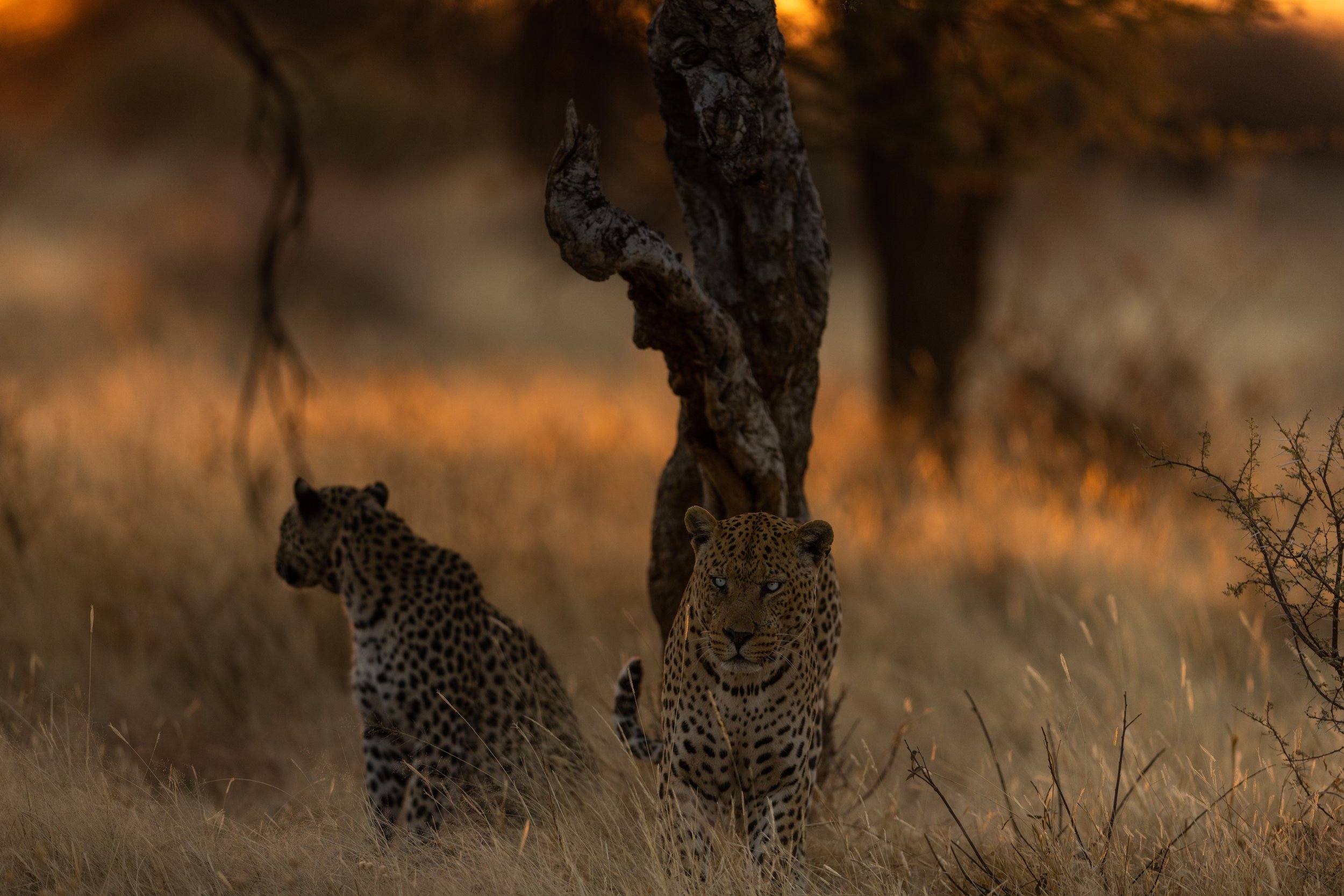Okonjima: A Captivating Photographic Destination for Wildlife Enthusiasts
When it comes to wildlife photography, few places can match the breathtaking beauty and rich biodiversity of Okonjima, located in the heart of Namibia. This incredible destination offers photographers a unique opportunity to capture captivating images of collared animals, including their iconic leopards.
With its extraordinary landscapes and diverse wildlife, Okonjima offers a plethora of opportunities to capture stunning photographs. In this blog, we will explore the reasons why Okonjima is a highly recommended photographic destination, enticing photographers with its unique features and incredible wildlife encounters.
Abundance of Wildlife: Okonjima is renowned for its thriving wildlife populations, making it an ideal destination for photographers. The reserve is home to a variety of iconic African animals, including leopards, hyenas, giraffes, zebras, and numerous bird species. This abundance of wildlife provides photographers with a diverse range of subjects to photograph and immortalize in their images.
Conservation Success: Okonjima is not only a photographic paradise but also a conservation success story. The reserve has been at the forefront of wildlife conservation efforts, particularly in rehabilitating and preserving the leopard population. By visiting Okonjima, photographers have the opportunity to witness and document the conservation work firsthand, creating images that raise awareness about the importance of protecting these endangered species.
Tracking Collared Animals: One of the unique aspects of Okonjima is its collared animal tracking program. By collaring certain animals, such as leopards, researchers and photographers can gain insights into their behavior and movement patterns. This tracking program offers photographers an exceptional chance to photograph collared animals up close, capturing intimate moments and interactions that reveal their fascinating lives in the wild.
Photographic Opportunities: Okonjima presents a multitude of photographic opportunities, whether it's capturing animals against the stunning backdrop of Namibia's landscapes or documenting their behavior in their natural habitats. From golden savannahs to dense bushvelds, the diverse scenery allows photographers to experiment with different compositions, lighting conditions, and perspectives, resulting in truly captivating images.
Predator Viewing and Photography: Okonjima is renowned for its predator viewing and photography experiences. The reserve offers guided game drives and walks, led by experienced guides who possess in-depth knowledge about the wildlife and their behaviors. These experiences provide photographers with the opportunity to witness and photograph predators in their natural environment, capturing their power, grace, and unique hunting techniques.
Cultural Experiences: In addition to its remarkable wildlife, Okonjima offers cultural experiences that further enrich the photographic journey. The reserve is home to the AfriCat Foundation, which focuses on the conservation of large carnivores and environmental education. Visitors can engage with local communities, learn about traditional cultures, and document the human-wildlife coexistence, adding a meaningful dimension to their photographic storytelling.
Spectacular Sunrises and Sunsets: The vast landscapes of Okonjima provide a breathtaking canvas for capturing the magical colors of sunrise and sunset. The golden light bathes the surroundings, creating a warm and ethereal atmosphere that elevates the beauty of the wildlife and the scenery. Photographers can take advantage of these prime lighting conditions to create stunning images filled with drama, tranquility, and natural splendor.




Equipment and Gear: To maximize your photographic experience at Okonjima, it is essential to have the right equipment. Consider investing in the following gear:
Camera Body: A DSLR or mirrorless camera with manual settings will provide you with the flexibility and control needed for wildlife photography.
Telephoto Lens: A telephoto lens with a focal length of at least 200mm is recommended to capture detailed shots of distant animals without disturbing their natural behavior.
Tripod and Monopod: These stability-enhancing tools will help you maintain sharpness in your images, especially when using longer focal lengths or shooting in low-light conditions.
Bean Bag: A bean bag can serve as a makeshift support for your camera when shooting from a vehicle, offering stability and reducing vibrations.
Art Wolfe guides guests on a hybrid tour through Namibia
Photographing collared animals offers a unique opportunity to document these magnificent creatures and contribute to their conservation efforts. By understanding and employing specific techniques, photographers can capture compelling images that highlight the beauty and significance of collared animals in their natural habitats. There are some essential photo techniques that can help you capture stunning photographs of these fascinating subjects. From understanding their behavior to mastering composition and lighting, these techniques will enhance your ability to tell a captivating visual story while respecting the well-being of the animals. To capture compelling images of collared animals, it is crucial to employ specific techniques and strategies. Here are some tips to enhance your photography skills:
a. Patience and Observation: Spend time observing the behavior of collared animals to anticipate their movements and actions. Patience is key to capturing unique and extraordinary moments.
b. Composition and Framing: Pay attention to the composition of your shots, using the rule of thirds, leading lines, and negative space to create visually appealing images. Experiment with different angles and perspectives to add depth and interest to your photographs.
c. Focus and Depth of Field: Use a wide aperture (small f-number) to isolate your subject from the background and create a pleasing bokeh effect. Ensure your focus is sharp on the animal's eyes or the collared area to draw attention to the collar's significance.
d. Shutter Speed and Freeze Action: Depending on the animal's behavior, adjust your shutter speed accordingly. Faster shutter speeds freeze action, allowing you to capture dynamic moments, while slower speeds can convey a sense of motion.
e. Golden Hour Advantage: Take advantage of the soft and warm light during the golden hour (the hour after sunrise and before sunset) to create a magical atmosphere in your photographs. The low angle of the sun will add depth and texture to your images.
With its abundant wildlife, conservation efforts, unique collared animal tracking program, diverse landscapes, and exceptional photographic opportunities, Okonjima offers an unforgettable experience for wildlife photographers.


